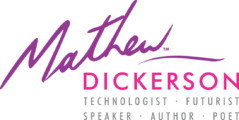Businesses typically don’t start as multinational organisations with tens of thousands of employees. Most businesses are started by one or two people with a passion. Think of some of the best-known in our industry. Paul Allen and Bill Gates loved programming way back in 1975 and that passion has grown to 128,000 employees at Microsoft today. Steve Wozniak and Steve Jobs started selling personal computer kits in 1976 and now Apple has 98,000 employees. Larry Page and Sergey Brin were simply completing their studies in 1996 and their little research project exploded into 54,000 employees in less than twenty years.
I am sure many readers of this magazine have a similar story to tell. What started out as a passion or simply providing a service often grows and grows and grows and, before you know it, you run into strangers in the hallway that are your employees.
One of the greatest challenges in a growing environment is to maintain efficiencies. Many people talk about the efficiencies of scale but I often see the inefficiencies of scale. As organisations grow, the greatest challenge is not how to attract new clients or how to employ new staff. It is in working out how you can ensure the entire organisation is working together and communicating effectively. There are also additional employees required to maintain the consistency across the organisation.
Google was famous from the early days for a very collaborative environment and a flat structure. It is easy to maintain that when Larry and Sergey are sitting in the same room with a few other employees. As the organisation grew, though, they found that their culture, which they believed to be unique, was being eroded and it started to look just like any other large multi-national. To combat this they employed a Chief Culture Officer who has the job of developing and maintaining a culture that stays true to the core values that the company started on. While that sounds great, it is an additional expense that the company didn’t have when they were small. I know that Google can probably squeeze this employee into their budget but my point is that as organisations grow sometimes the per employee costs go up rather than down.
I had a mountain bike accident recently and found myself in the largest hospital in the state. With 855 beds and 23 operating rooms, there is no shortage of staff in this location. Whilst I could not question the quality of care and always felt that my best needs were being served, I had major concerns about the taxpayer funds with the inefficiencies and silo approach. Even though I was laying on a bed, in pain with four broken vertebrae and a few other less serious injuries, I was thinking about how they could improve their business and starting to mentally write this column.
The Ambulance drivers were fantastic and were staying with me chatting long after we arrived at hospital. I noted how friendly they were being and said that I felt good enough that they could leave and I would be in the Emergency Department before too long. It was then my ego took a bit of a hit. They weren’t staying chatting to me because I was the friendliest person they had ever met – they needed their bed back! I assumed there would be just a pool of Ambulance beds at the hospital as ‘exchange’ beds but this wasn’t the case. The hospital and ambulances are different departments so they don’t share information. Possibly the worst inefficiency I saw was in relation to my neck brace. Three women arrived to show my wife how to correctly re-fit my neck brace when this had to be changed over. This was required before I could be discharged. Unfortunately they arrived before the team that delivered neck braces. Some hours later, two men arrived to deliver the neck brace. When my wife asked to be shown how to fit it, we were informed that this wasn’t their job. Another team would show her this procedure. Re-enter the original three women after several more hours and the lessons were delivered. Five people over three visits to deliver and instruct on a neck brace seemed somewhat inefficient.
There were many more examples I witnessed in my short stay but what was absolutely driven home to me was that the greatest challenge for any growing business is to ensure that communication channels amongst all of the different areas are not only open but encouraged. This may mean regular team meetings where all team members or team leaders are connected together either physically or via videoconference. It may mean brief but regular internal updates so all staff are aware of where the organisation is headed. Most importantly, it may mean regular social occasions so the staff actually know their fellow employees. And whilst it is still frustrating that money is wasted on our health system, their $19.9 billion annual budget gives them a little bit of wiggle room. In my business though I don’t quite have that size budget to work with.
Let me know your best efficiency strategies at md@smallbusinessrules.com.

